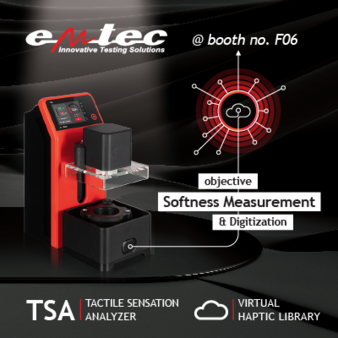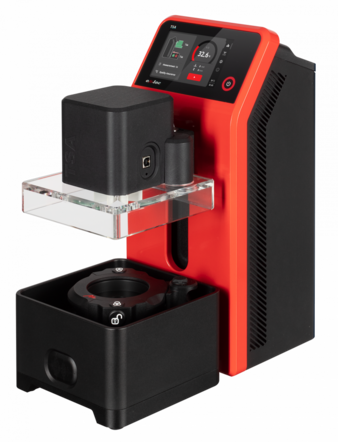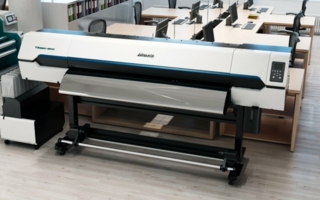10/01/2024 – emtec Electronic at Texworld NYC — auf Deutsch lesen
Textile haptics digitized and revolutionized
The German company emtec Electronic takes part at Texworld, hosted from January 22nd-24th, 2024, at the Javits Center in New York City. The company wants to showcase its Tacticle Sensation Analyzer (TSA), a device designed to measure the haptic properties of textiles.
This analyzer, combined with their Virtual Haptic Library, aims to digitize and categorize objective data, revolutionizing the textile evaluation process. When it comes to testing the haptic qualities of textiles, apparels and fabrics, it isn´t enough to simply rely on subjective impressions of sensations, which can vary widely depending on the sensitivity of the single hand-panel tester, daily conditions, and even the individual culture. An objective evaluation of haptic parameters such as softness, smoothness, flexibility, and recovery behavior is essential for clear communication of product specifications across locations. Parameters as friction, drape and thermo-haptics round off the spectrum of TSA measurement values. “To reliably compare and reproduce products with the desired haptic characteristics, manufacturers need objective data on hand,” says Antonio Trampler, Area Sales Manager for emtec. “Any-thing else is just a guess.” Together with Alexander Gruener, Business Development Manager, and Chase Tinker from partner company Technidyne of Industrial Physics, they will introduce the new TSA model, equipped with advanced features for precise measurements and analysis.The new TSA features advanced measuring capabilities, including thermohaptic determination, friction, drape, an improved method for deformation and springback measurements, and an image of the sample for optical analysis. Much like color codes, measured TSA data also function as a numeric language, allowing independent operators to accurately match the haptic characteristics of a product. In addition, the TSA integrates all measured sample data into a Virtual Haptic Library (cloud-based haptic database), allowing operators to search for, compare, and reproduce a product’s haptic traits from anywhere in the world. Furthermore, Alexander Gruener highlights the transformative impact of quantifying and digitizing subjective touch parameters. This technological leap should eliminate the need for physical sample shipment, improving efficiency and ensuring rapid returns on investment.





